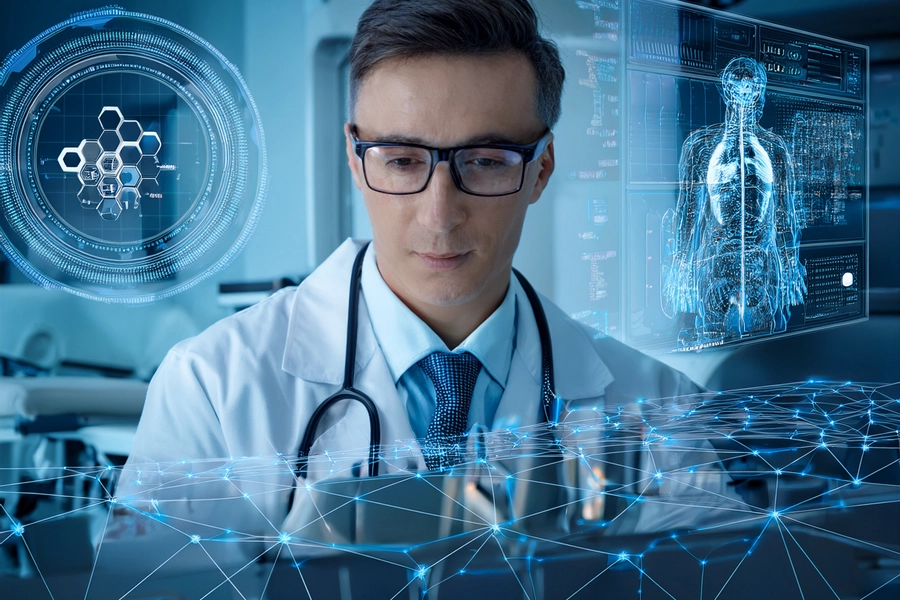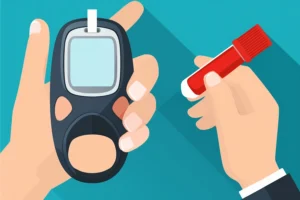Artificial Intelligence (AI) is no longer just a futuristic concept, it is becoming an essential part of modern healthcare. As a medical content creator, I believe it’s important for all of us – doctors, students, caregivers and even the general public to understand how this powerful technology is shaping the future of medicine.
In this article, I’ll take you through how AI is transforming the healthcare field, what makes it unique, its benefits and challenges and what we can expect from it in the near future.
Why AI Is Becoming Essential in Healthcare?
AI refers to computer systems that can perform tasks normally requiring human intelligence like learning, reasoning and problem-solving. In healthcare, AI systems are designed to process huge volumes of data, recognize patterns and make predictions or decisions with high speed and accuracy. With the explosion of medical data like scans, lab reports and patient histories, AI helps doctors and healthcare systems manage information more effectively than ever before.
The main reason AI is becoming essential is simple. It helps in early detection, better diagnosis and smarter treatment plans. It can analyze thousands of medical images or patient records in minutes, something that might take a human many hours or even days. This doesn’t mean AI replaces doctors, but it assists them to make better and quicker decisions, especially in high-pressure situations.
How AI Is Different from Other Technologies
Unlike basic medical tools or software, AI learns from the data it processes. For example, if an AI system is trained to detect lung cancer in X-rays, it becomes better over time as it reviews more images. Traditional systems just follow programmed instructions, while AI adapts and improves, much like a human would.
This learning ability makes AI especially powerful in complex fields like radiology, oncology, pathology and neurology. AI can help detect conditions like cancer, strokes and rare genetic disorders even before symptoms appear, often with higher precision than traditional diagnostic methods.
Key Areas Where AI Is Making a Difference
1. Medical Imaging and Diagnosis One of the most successful uses of AI is in medical imaging like X-rays, mammograms, CT scans and MRIs. AI-powered tools can now detect breast cancer, lung nodules and brain abnormalities with incredible accuracy. Recent studies show AI-supported mammography can improve breast cancer detection rates by over 17% without increasing false alarms. That’s a huge step in saving lives through early intervention.
2.Wearable Health Devices There are wearable devices using AI to monitor health in real-time. These devices can detect tremors in patients with neurological disorders like essential tremor and deliver subtle nerve stimulation to control the shaking. This non-invasive therapy is offering relief to patients without the need for medications or surgery.
3. Personalized Treatment Plans AI can analyze a patient’s genetics, lifestyle, medical history and even their response to medications to suggest the best treatment approach. This type of personalized medicine is especially helpful in complex diseases like cancer, where one size does not fit all.
4. Drug Discovery and Research Traditionally, discovering a new drug takes years and costs billions. AI can analyze large databases of molecules and predict which combinations are likely to work, helping researchers speed up the development of new treatments and vaccines.
5. Hospital and Clinic Operations AI is also helping hospitals run more efficiently. It can predict patient admissions, optimize bed management, and streamline workflows, so that doctors and nurses can focus more on patient care instead of paperwork.
6. Remote Monitoring and Virtual Assistants AI-powered virtual health assistants can help patients manage chronic diseases like diabetes or heart failure from home. They can remind patients to take their medicine, monitor symptoms and even alert doctors when something is wrong.
Advantages of AI in Healthcare
◦ Faster and more accurate diagnoses
◦ Less workload on doctors and nurses
◦ Lower costs for healthcare systems
◦ Personalized and targeted treatment
◦ Increased access to care through remote monitoring
◦ Improved outcomes through early detection and intervention
Limitations and Challenges
While AI is powerful, it’s not perfect. Here are some of the current limitations:
◦ Data Privacy: Since AI relies on large amounts of patient data, protecting that data is a major concern.
◦ Bias in Algorithms: If the data used to train AI is biased, the results can also be biased, leading to incorrect or unfair decisions.
◦ Lack of Human Touch: AI doesn’t replace the human connection that the patients have with healthcare professionals.
◦ Need for Regulation: We still need clear legal and ethical guidelines on how to safely and fairly use AI in medicine.
The Future of AI in Healthcare
AI is still evolving, and the future holds exciting possibilities. Some of the promising areas include:
◦ Robotic surgeries with real-time AI guidance
◦ AI-powered mental health support through emotion-recognizing virtual therapists
◦ Voice-based diagnostics that can detect illness from speech patterns
◦ AI in emergency care to predict outcomes and guide triage
◦ Genomic AI that analyzes DNA for early disease prediction
◦ Federated learning systems that train on data without sharing it, improving privacy
These innovations could one day help eliminate many preventable deaths, reduce the burden on hospitals and bring quality healthcare to remote or underdeveloped areas.
Final Thoughts
Artificial Intelligence is not just a buzzword, it’s a true game-changer in medicine. By helping healthcare professionals do their jobs better, faster and with fewer errors, AI is already making a positive difference in patient care. As the technology continues to improve, it’s important for us to embrace it responsibly, keeping patient safety, privacy and ethics at the heart of all advancements.
Staying informed about the growing role of AI in medicine is essential for anyone interested in the future of healthcare.
Disclaimer: This article is for informational purposes only and does not substitute for professional medical advice. Always consult your healthcare provider for diagnosis and treatment options.




